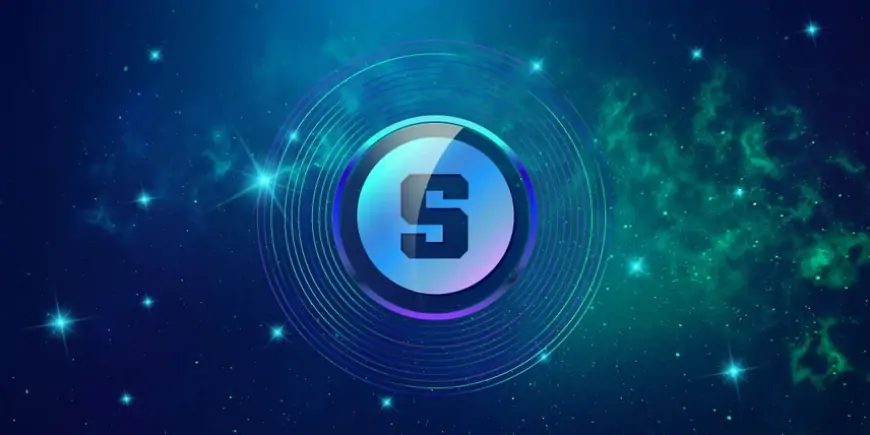What is The Sandbox (SAND) and how does it work? Definition from Digimagg
Explore The Sandbox (SAND), a blockchain-based metaverse offering players the opportunity to own assets and trade them for real-world money.

Blockchain gaming and the metaverse stand as two of the most prominent trends in the cryptocurrency realm presently. These platforms offer players the chance to immerse themselves in virtual environments where they can possess assets and feel a sense of empowerment. Many of these games utilize a dual-token economy model to provide players with a unique gaming experience. The Sandbox exemplifies such a virtual world teeming with opportunities.
The primary allure of blockchain-based metaverses lies in their ability to enable players to play, construct, and own virtual properties and assets within the game. Crucially, these assets can be traded for real-world currency, offering unparalleled potential for brands, artists, creators, and players alike. The Sandbox endeavors to foster this creativity and unlock its full potential.
What is The Sandbox (SAND)?
The Sandbox aims to harness the capabilities of blockchain and non-fungible tokens (NFTs) to introduce scarcity, security, and authenticity into the digital realm. This enables users to construct their virtual worlds and ecosystems. Through The Sandbox, players can sculpt their landscapes and shape the gaming environment according to their preferences. While the concept of creating immersive gaming experiences is not novel, granting players complete control over how they monetize their creations is unprecedented, resulting in a unique virtual world paradigm. User-generated content gaming IPs are rare, yet The Sandbox has established a strong presence in this domain.
Pixowl, the team behind the project, has a track record of success with mobile games like The Sandbox and The Sandbox Evolution, boasting over 40 million downloads across iOS and Android. Transitioning The Sandbox to the blockchain in 2018 aimed to disrupt established games such as Minecraft and Roblox. By offering creators genuine ownership of in-game assets through the NFT standard, The Sandbox incentivizes builders, players, and artists to explore blockchain technology in a gamified context.
How does The Sandbox work?
Introducing a user-generated content ecosystem on the blockchain is just the beginning for Pixowl. They've developed three integrated products and services to provide a comprehensive experience for content production, all while empowering users with copyright ownership through blockchain technology and smart contracts.
The first component is VoxEdit, a Voxel Editor that enables users to create voxel models, rig them, and animate them. Available on Windows and Mac, it allows users to craft a variety of 3D objects, from humans to foliage and animals to tools. These creations can then be exported from VoxEdit to The Sandbox marketplace to be utilized as in-game assets.
The second product is The Sandbox's native marketplace, a platform where users can upload, publish, and sell their creations developed with VoxEdit. All uploads undergo decentralized storage and accessibility through IPFS, and the upload process is recorded on the Ethereum blockchain to establish ownership. Creations that successfully pass this process become assets that players can sell via an initial sale offer on the NFT marketplace.
Lastly, there's The Sandbox Game Maker, which allows developers and enthusiasts to build 3D games without coding skills and free of charge. Using a visual editor, users can create games within minutes. Each new game contributes to the ever-expanding metaverse and can be filled with interactive creations and experiences.
What sets The Sandbox apart from others?
Unlike conventional play-to-earn games on the blockchain, The Sandbox relies solely on user-generated content. There's no predetermined game world; instead, users have constant access to the metaverse, allowing them to shape and monetize it as they see fit. This unique approach grants unparalleled freedom in play-to-earn gaming. Additionally, by empowering users to create all content within the metaverse, The Sandbox offers extensive flexibility and customization options. Players can utilize the provided tools to create and enhance their gaming experience or monetize various aspects. From a play-to-earn perspective, The Sandbox demonstrates promising potential for long-term sustainability, provided that users continue to contribute to the ecosystem's growth.
What are LAND, SAND, and ASSETS?
$SAND functions as the primary in-game currency within The Sandbox metaverse, enabling players to purchase and trade LANDS and ASSETS. It operates on the ERC-20 token standard and facilitates transactions and interactions within the platform. With a total supply of three billion $SAND tokens, users can acquire them from various exchanges such as Binance, Uniswap, and Gemini.
LANDS are essential components of The Sandbox Metaverse, representing parcels of virtual real estate owned by players to develop and monetize experiences. With a limited supply of 166,464 LAND available, players can utilize them to host games, organize multiplayer activities, create structures, or offer social experiences to the community.
ASSETS, on the other hand, are tokens generated by players through user-generated content. These assets are tradable on the integrated marketplace and serve as creative elements within The Sandbox Game Maker.
What is the community's feedback on The Sandbox?
Considering The Sandbox's longstanding presence since its initial mobile app release in 2011, it has garnered a dedicated following. Transitioning to blockchain technology hasn't hindered its growth, and the community continues to expand. Artists are actively crafting voxel collections for NFTs, and new game assets are continually introduced. Furthermore, many are just discovering this metaverse and are investing in LAND to contribute more content. While there's significant growth potential, the challenge lies in attracting individuals outside the crypto sphere. For those intrigued by game development but lacking coding skills, The Sandbox offers accessible tools for experimenting with creating and monetizing gaming content via blockchain.












































